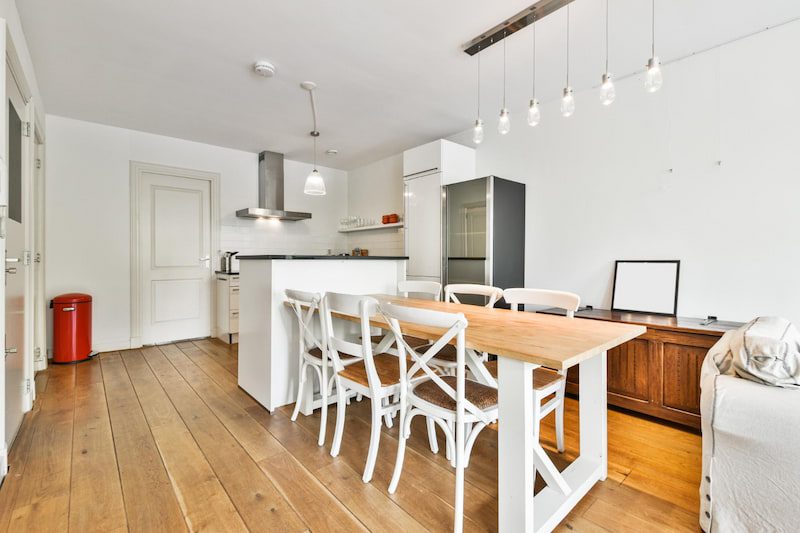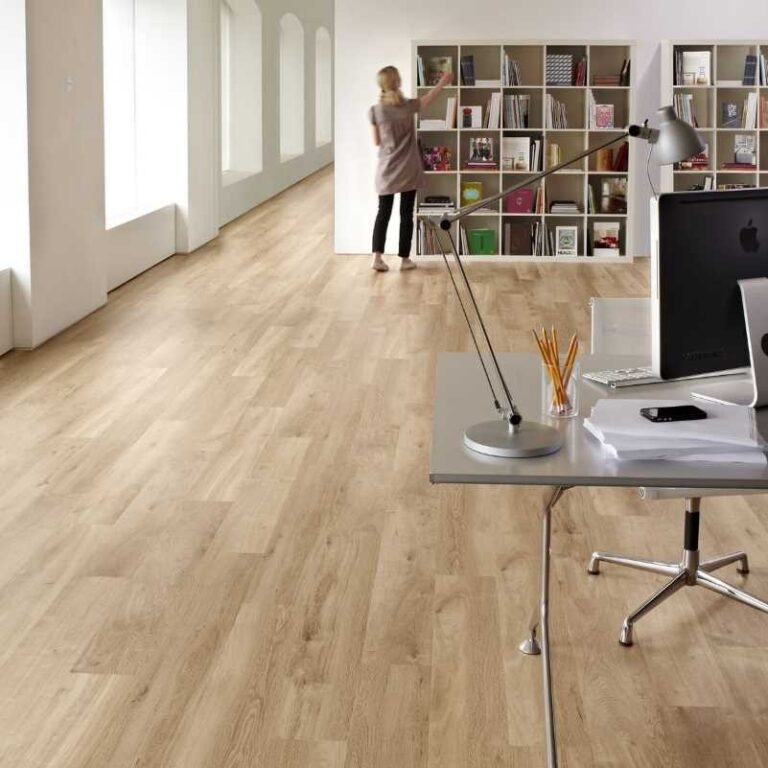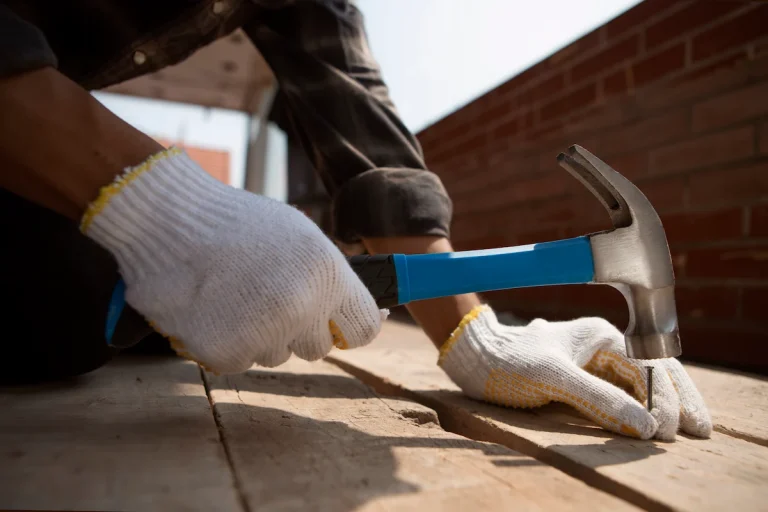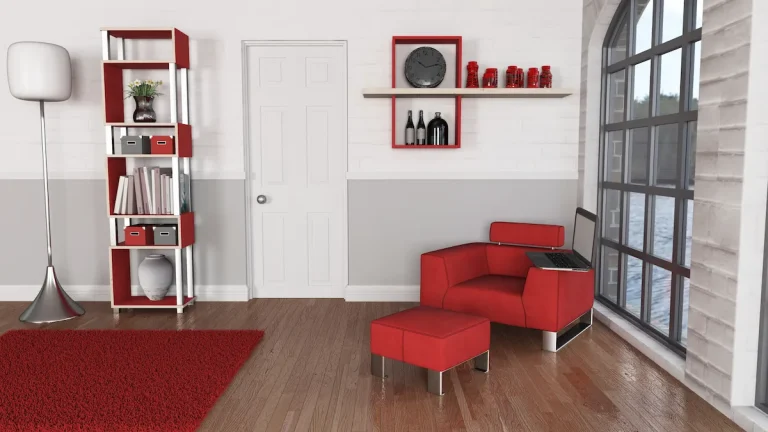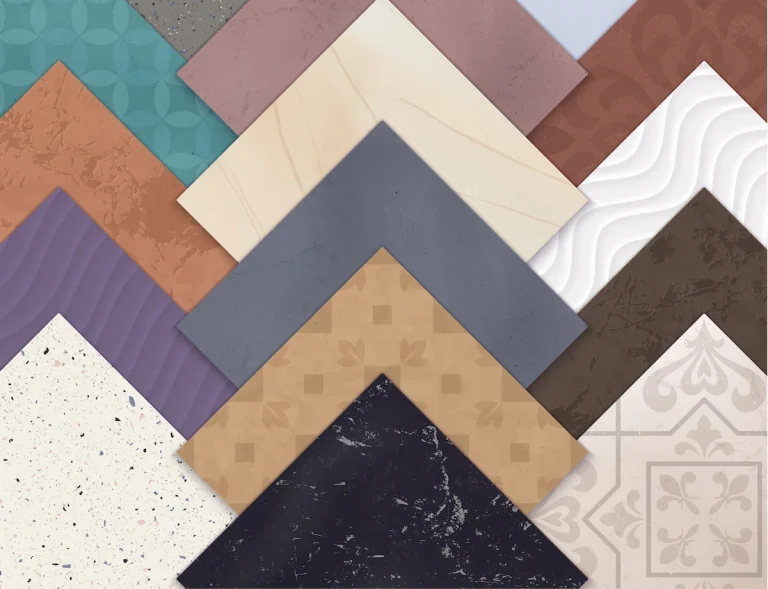Engineered wood flooring, along with alternatives such as Laminate, Cork, and Luxury Vinyl Tile, is increasingly recognized as a favourable option for homeowners seeking to integrate elegance and functionality, particularly when used in conjunction with underfloor heating systems.
This article examines the best engineered wood flooring for underfloor heating, and the rationale behind the strong recommendation for this combination, considering the importance of thermal conductivity and moisture content.
It covers a comprehensive overview of the types of underfloor heating that are compatible with engineered wood and other flooring types like Vinyl and Stone, provides installation guidance, including subfloor requirements and insulation standards, and highlights the most suitable flooring options available, equipping homeowners with the necessary information to make informed decisions for their residences.
What Is Engineered Wood Flooring?
Engineered wood flooring is a highly versatile and durable flooring solution designed to replicate the aesthetic of solid wood flooring, making it an increasingly popular choice for both residential and commercial environments.
This type of flooring is composed of multiple layers, typically featuring a hardwood veneer atop a core made of plywood or high-density fibreboard (MDF). Such construction provides enhanced stability, rendering engineered wood flooring less susceptible to warping and moisture-related damage, which is particularly important when assessing compatibility with heating systems, including underfloor heating.
How Does Underfloor Heating Work?
Underfloor heating is a sophisticated heating system designed to distribute radiant heat uniformly across the floor surface, providing comfort and efficiency in both residential and commercial environments such as homes and offices.
This innovative approach employs either electric cables or water pipes integrated within the floor structure to radiate heat upwards, thereby creating a comfortable atmosphere that complements the aesthetic appeal of wood floors and tiles.
By elevating the floor temperature, underfloor heating not only ensures a pleasant ambience but also contributes to reduced energy costs in comparison to traditional heating systems. This effectiveness is achieved through the principles of thermodynamics and thermal conductivity, which facilitate optimal heat transfer.
The Reason Why Engineered Wood Flooring Recommended for Underfloor Heating
Is engineered wood good for underfloor heating? Engineered wood for underfloor heating recommended due to its unique composition and inherent properties, which offer an optimal balance of stability, durability, and comfort level, enhancing its compatibility with such systems. Unlike solid wood flooring, engineered wood is less affected by fluctuations in temperature and humidity that may arise with underfloor heating, thereby making it a more stable option for maintaining appropriate moisture content.
Furthermore, engineered wood flooring exhibits excellent heat conductivity, facilitating efficient heat transfer and ensuring consistent floor temperatures across the surface, which enhances the overall comfort level within the living environment.
1. Stability and Durability
The stability and durability of engineered wood flooring make it an excellent choice for residential applications, particularly when integrated with underfloor heating systems. Engineered wood is meticulously designed with multiple layers, which provide greater resistance to warping and temperature fluctuations compared to solid wood flooring. This ensures that the flooring maintains its integrity over time. Such stability is essential for sustaining a consistent floor temperature, which is critical for the effectiveness of underfloor heating, while also offering long-lasting performance and versatility in flooring options.
A fundamental structural advantage of engineered wood flooring is its innovative construction. Each plank comprises a top layer of hardwood, supported by several inner layers of plywood or high-density fibreboard, thereby forming a robust yet flexible foundation. This layered design not only enhances stability but also facilitates the material’s capacity to expand and contract in response to changes in humidity and temperature, significantly reducing the likelihood of warping or cracking.
- Engineered wood flooring generally exhibits superior performance under thermal stress compared to solid wood.
- While solid wood possesses aesthetic appeal, it often lacks the adaptability necessary for effective operation with heating systems.
- Engineered wood allows homeowners to appreciate the visual qualities of hardwood while benefiting from its inherent durability and functionality.
These structural attributes significantly contribute to the longevity of the flooring investment, establishing engineered wood as a practical choice for any environment that employs underfloor heating.
2. Heat Conductivity
Heat conductivity is a crucial consideration when selecting flooring materials for underfloor heating, and engineered wood flooring stands out in this regard. Engineered wood is specifically designed to facilitate optimal heat transfer, allowing the radiant heat from underfloor heating systems to effectively warm the space. Its layered construction enhances thermal resistance, ensuring even distribution of heat across the surface, thereby maximising both comfort and efficiency within the heating system.
The typical structure of engineered wood comprises a core constructed from high-density fibreboard or plywood, topped with a real wood veneer. This composition not only enhances durability but also significantly contributes to thermal performance and effective heat transfer.
- With appropriate thermal resistance, the flooring minimises excessive heat loss, thus maintaining warmth for extended periods.
- The interaction between the wood layers and the underfloor heating system generates a synergy that optimises overall heating efficiency.
- By ensuring uniform heat distribution, users can enjoy a balanced warmth throughout the room, which is particularly advantageous in colder climates.
The choice of engineered wood flooring influences not only aesthetic preferences but also the effectiveness of heating systems, including radiators, underscoring the importance of understanding thermal characteristics.
3. Moisture Resistance
Moisture resistance is a critical characteristic of engineered wood flooring, rendering it an excellent choice for installations that involve underfloor heating systems.
This attribute is particularly important in regions experiencing fluctuations in humidity levels, as it significantly influences both the durability and aesthetic appeal of the flooring. The advanced construction of engineered wood, consisting of multiple layers, serves as a barrier against excess moisture, thus protecting the flooring from potential issues. This feature not only mitigates concerns regarding long-term damage but also enhances heat transfer when utilised alongside underfloor heating systems.
Key benefits of moisture resistance in engineered wood flooring include:
- Ensuring consistent heat distribution.
- Minimising energy loss.
- Promoting healthier indoor environments.
Such resilience and adaptability highlight the value of engineered wood flooring across various environmental contexts, establishing it as a reliable choice for homeowners and designers alike.
Types of Underfloor Heating Systems that Compatible with Engineered Wood Flooring
Can you put underfloor heating under engineered wood floors? Understanding the types of underfloor heating systems compatible with engineered wood flooring is essential for ensuring optimal performance and longevity of both the flooring and the heating components.
Engineered wood flooring can be effectively utilised with various heating systems, including electric underfloor heating and water-based underfloor heating. Each system presents distinct advantages and requirements, making it imperative to evaluate the compatibility of the flooring with the specific type of underfloor heating being installed to achieve the best possible results.
a. Electric Underfloor Heating
Electric underfloor heating has become a preferred choice for homeowners seeking to integrate an efficient heating solution with engineered wood flooring, as well as other options like Parquet and Carpet. This system employs electrical cables or mats installed beneath the flooring, delivering immediate warmth to the space while minimising disruption during the installation process. It is imperative to adhere to specific installation instructions to ensure that the electric underfloor heating is compatible with engineered wood flooring, thereby maximising its effectiveness and preserving the integrity of the flooring material.
When evaluating this heating option, it is essential to recognise its numerous advantages, including energy efficiency and the elimination of cold floors during the winter months. Additionally, this system may lead to potential savings on heating costs over time, particularly when paired with high-quality Kährs hardwood floors. However, several considerations must be addressed:
- Proper insulation is necessary to achieve maximum heat retention.
- It is crucial to select the appropriate type of engineered wood flooring, such as Kährs, that can withstand temperature fluctuations.
- Ensuring that the heating system is evenly installed is vital for consistent warmth throughout the space.
To facilitate an efficient installation, maintaining a minimum distance between the heating elements and any wooden components is essential, as is monitoring the maximum operating temperature to prevent damage. Including an underlay can enhance insulation and support. Adhering to these guidelines will ensure that the electric heating system operates optimally while enhancing the aesthetic appeal of the engineered wood flooring.
b. Water-based Underfloor Heating Systems
Water-based underfloor heating is an effective method for heating spaces with engineered wood flooring and can be integrated with other flooring types like Vinyl, Cork, or even Stone. This system employs a network of pipes filled with heated water, allowing for the even distribution of warmth throughout the area. It provides enhanced thermal resistance, maintaining warmth even when the heating system is not operational.
Adhering to proper installation instructions is crucial to ensure that water-based underfloor heating systems are compatible with engineered wood flooring, thereby maximising their efficiency and preserving the flooring’s structural integrity.
By integrating this heating method, homeowners can achieve a comfortable ambience while also benefiting from significant energy efficiency advantages. In comparison to traditional heating systems like radiators, water-based underfloor heating operates at lower temperatures while delivering consistent and uniform heating across the space. This approach minimises energy consumption and can contribute to reduced utility bills.
- Installation Compatibility: It is essential to select engineered wood flooring that can tolerate heat without warping or sustaining damage during installation.
- Thermal Emission: Implementing a thermal barrier can further enhance the performance of the system, ensuring effective heat distribution.
- Maintenance: Water-based systems typically require less maintenance than electric alternatives, rendering them a practical option for long-term use.
Effective collaboration with a qualified installer who is knowledgeable about both water-based underfloor heating and engineered wood flooring is essential for optimising performance and longevity.
Factors to Consider When Installing Underfloor Heating with Engineered Wood Flooring
When installing underfloor heating with engineered wood flooring, it is imperative to consider several critical factors to ensure a successful and efficient installation, including the compatibility between the flooring material and the heating system.
Proper subfloor preparation is essential, as the subfloor must meet specific requirements to provide adequate support and insulation for the heating system. Furthermore, adherence to the correct installation guidelines is crucial for maintaining compatibility between the engineered wood flooring and the heating system, ensuring optimal thermodynamics.
This diligence ultimately enhances the overall comfort level and performance of the space.
1. Subfloor Preparation
Subfloor preparation is a critical step in the successful installation of underfloor heating systems when used in conjunction with engineered wood flooring. It is imperative to ensure that the subfloor is level, clean, and dry to facilitate optimal heat distribution and prevent moisture-related issues. Adhering to specific installation instructions regarding subfloor requirements will help achieve the necessary insulation standards and promote the effective functioning of the heating system, ensuring flooring compatibility.
The process begins with a thorough assessment of the existing subfloor, checking for any uneven areas or damage that may compromise the installation. It is essential to undertake the following actions:
- Remove any old flooring, such as Carpet or Laminate, and thoroughly clean the surface.
- Repair any cracks or damage to create a solid base.
- Utilise a levelling compound for any dips or bumps to ensure a smooth finish with MDF.
- Incorporate insulation boards to enhance thermal efficiency and maintain the heating element at optimal performance.
- Measure the moisture levels of the subfloor; it is advisable to use a moisture barrier if levels exceed recommended thresholds to prevent future complications.
By following these steps, one can ensure that the underfloor heating system will operate effectively, while preserving the aesthetic appeal of engineered wood flooring.
2. Floor Heating System Compatibility
Ensuring compatibility between underfloor heating systems and engineered wood flooring is essential for achieving optimal performance and extending the lifespan of the flooring. Different heating systems, including electric and water-based options, have distinct compatibility requirements that must be meticulously evaluated during the installation process. This is true for various flooring types, from Luxury Vinyl Tile to Parquet. Adhering to specific installation guidelines will ensure that the engineered wood flooring functions effectively with the chosen underfloor heating system, ultimately enhancing both comfort and efficiency.
To achieve this objective, it is crucial to assess several key factors. First, one must understand the maximum temperature limitations of the engineered wood; most manufacturers advise maintaining a temperature below 27°C (80°F) to avoid potential damage. Additionally, considering the thermal conductivity of the flooring material is vital, as this significantly impacts heat transfer.
- Choose the right heating system: Electric systems offer flexibility in heating zones, while water-based systems are typically more efficient for larger areas.
- Consult manufacturer guidelines: Ensure compatibility by adhering to the flooring manufacturer’s specifications regarding heating systems and installation procedures.
Employing an effective installation method, such as floating or glue-down applications, can greatly influence the flooring’s performance, necessitating a thorough approach to achieve the optimal flooring solution.
3. Proper Insulation
Proper insulation is essential for the effective performance of underfloor heating systems when paired with engineered wood flooring, as it ensures energy efficiency and comfort. Adequate insulation minimises heat loss to the subfloor, allowing heat to radiate effectively through the engineered wood flooring. This is crucial for maintaining temperature control throughout the home. Adhering to the appropriate installation guidelines and insulation standards will enhance thermal resistance, fostering a comfortable living environment while maximising the efficacy of the heating system.
Incorporating appropriate insulation not only contributes to a pleasant living atmosphere but also aids in reducing energy costs over time. Materials such as insulation boards, mineral wool, and reflective foil can be utilised to achieve significant thermal performance, taking into account the principles of thermodynamics.
Selecting the correct method for installing these materials is critical; for instance, placing insulation boards directly beneath the heating system can substantially improve heat retention. Ensuring complete coverage with minimal gaps is vital to prevent cold spots that can disrupt uniform heating.
- Insulation Boards: These rigid materials are ideal for providing high thermal resistance.
- Mineral Wool: This material is excellent for both soundproofing and thermal insulation.
- Reflective Foil: This enhances heat reflection, optimising heating efficiency.
By considering these factors, one can attain optimal insulation while enhancing the longevity and efficiency of both the underfloor heating system and the engineered wood flooring.
How to Install Engineered Wood Flooring with Underfloor Heating
Installing engineered wood flooring in conjunction with underfloor heating necessitates meticulous planning and strict adherence to installation guidelines to achieve a successful result. There are two primary methods for installing engineered wood flooring over underfloor heating: the floating installation method and the glue-down installation method.
Each approach presents distinct advantages and considerations, making it imperative to select the appropriate method based on the specific type of flooring and the heating system in use.
a. Floating Installation Method for Wood Floors
The floating installation method for engineered wood flooring involves laying the planks without adhering them to the subfloor. This approach accommodates movement and expansion, facilitating ease of installation. This method is particularly advantageous in conjunction with underfloor heating systems, as it allows the flooring to adapt to temperature fluctuations without incurring damage. This is especially beneficial for homes with diverse flooring needs. Adhering to the appropriate installation instructions is essential for ensuring proper alignment and functionality while maintaining compatibility with the heating system.
To achieve optimal results with this installation technique, several steps must be followed with precision. It is imperative to ensure that the subfloor is dry, clean, and level before proceeding:
- Always use a high-quality underlay, which not only provides sound insulation but also promotes moisture control.
- Acclimatise the engineered wood planks in the room for several days to facilitate their adjustment to the environment. Kährs hardwood floors should also be given special attention during acclimatization.
- When laying the planks, it is crucial to stagger the joints by at least 30 cm to enhance stability and aesthetic appeal. Additionally, consider integrating materials like Cork or Laminate for different flooring sections.
- Leave a small expansion gap around the perimeter of the room to accommodate natural expansion resulting from heating cycles. This is particularly important when working with Vinyl or Carpet.
Integrating the floating method with underfloor heating requires regular monitoring of temperature settings to prevent excessive heat output that could warp the flooring. By following these specific guidelines, homeowners can ensure long-lasting performance while enjoying the warmth and comfort provided by underfloor heating. Be mindful of the principles of thermodynamics when adjusting temperature settings to ensure efficiency and prevent damage.
b. Glue-down Installation Method
The glue-down installation method involves the application of adhesive to the subfloor, thereby securing the engineered wood flooring directly to it, which provides a stable and solid fit. This method is particularly advantageous for underfloor heating systems, as it enhances heat transfer efficiency between the heating elements and the flooring material.
When selecting this installation technique, it is crucial to acknowledge its compatibility with underfloor heating as one of its primary benefits. This approach not only facilitates improved thermal conductivity but also minimises the risk of movement and warping, which can be detrimental when utilising heat sources beneath the floor.
Consider the specific requirements of different flooring types, such as Stone or Tiles, to ensure the glue-down method is suitable.
The following detailed steps should be followed to ensure a proper installation:
The glue-down installation method involves the application of adhesive to the subfloor, thereby securing the engineered wood flooring directly to it, which provides a stable and solid fit. This method is particularly advantageous for underfloor heating systems, as it enhances heat transfer efficiency between the heating elements and the flooring material.
When selecting this installation technique, it is crucial to acknowledge its compatibility with underfloor heating as one of its primary benefits. This approach not only facilitates improved thermal conductivity but also minimises the risk of movement and warping, which can be detrimental when utilising heat sources beneath the floor.
The following detailed steps should be followed to ensure a proper installation:
- Prepare the Subfloor: Ensure that the subfloor is clean, dry, and level. Any imperfections should be addressed to enable a smooth installation. When working with materials like MDF, proper preparation is crucial to avoid future issues.
- Choose the Right Adhesive: Select an adhesive specifically formulated for engineered wood and compatible with underfloor heating.
- Plan the Layout: Before applying the adhesive, plan the layout to minimise seams and enhance aesthetic appeal.
- Apply Adhesive: Evenly spread the adhesive across a section of the subfloor, utilising a notched trowel for consistency.
- Install the Flooring: Begin laying down the engineered wood planks, pressing them firmly into the adhesive as installation progresses.
- Allow to Set: Adhere to the adhesive manufacturer’s instructions regarding drying time before walking on the floor or activating the heating system.
By following these steps meticulously, one can ensure a successful application of the glue-down installation method, thereby achieving both durability and compatibility with underfloor heating.
The Best Types of Engineered Wood Flooring for Underfloor Heating
When selecting engineered wood flooring suitable for underfloor heating, it is imperative to consider the types that demonstrate compatibility and performance alongside heating systems.
Multi-ply engineered wood flooring, HDF core engineered wood flooring, and plywood core engineered wood flooring are among the most recommended options. Each type possesses distinct properties that influence thermal resistance, stability, and overall efficacy with underfloor heating. Therefore, making an informed selection is essential for achieving optimal comfort.
Kährs engineered wood flooring options are also highly recommended for their quality and compatibility with underfloor heating.
When selecting engineered wood flooring suitable for underfloor heating, it is imperative to consider the types that demonstrate compatibility and performance alongside heating systems.
Multi-ply engineered wood flooring, HDF core engineered wood flooring, and plywood core engineered wood flooring are among the most recommended options. Each type possesses distinct properties that influence thermal resistance, stability, and overall efficacy with underfloor heating. Therefore, making an informed selection is essential for achieving optimal comfort.
a. Multi-ply Engineered Wood Flooring
Multi-ply engineered wood flooring is constructed from multiple layers of wood, providing exceptional stability and durability, making it an excellent choice for applications involving underfloor heating. The layered design effectively minimises the impact of temperature fluctuations, ensuring reliable performance while maintaining comfort. This type of engineered wood flooring is particularly well-suited to complement the radiant heat produced by underfloor heating systems.
One of the primary characteristics of multi-ply engineered wood flooring is its capability to withstand the thermal variations typically associated with underfloor heating. By incorporating a flexible core and top layers, this flooring adapts effectively to heat transfer, which contributes to maintaining an even temperature across the surface. Consequently, homeowners can enjoy a comfortable environment without concerns related to warping or cracking. Consider also the integration of other materials such as Vinyl or Luxury Vinyl Tile for complementary flooring solutions.
Multi-ply engineered wood flooring is constructed from multiple layers of wood, providing exceptional stability and durability, making it an excellent choice for applications involving underfloor heating. The layered design effectively minimises the impact of temperature fluctuations, ensuring reliable performance while maintaining comfort. This type of engineered wood flooring is particularly well-suited to complement the radiant heat produced by underfloor heating systems.
One of the primary characteristics of multi-ply engineered wood flooring is its capability to withstand the thermal variations typically associated with underfloor heating. By incorporating a flexible core and top layers, this flooring adapts effectively to heat transfer, which contributes to maintaining an even temperature across the surface. Consequently, homeowners can enjoy a comfortable environment without concerns related to warping or cracking.
Key benefits include:
- Enhanced Comfort: Due to its superior heat retention, multi-ply engineered wood flooring offers a pleasantly warm surface underfoot.
- Eco-Friendly Choice: Often produced from sustainably sourced materials, it appeals to environmentally conscious consumers.
- Wide Design Selection: Available in various finishes and styles, it integrates seamlessly into any home décor.
This diverse range of advantages, combined with ease of maintenance, positions multi-ply engineered wood flooring as a prudent investment for contemporary living spaces.
b. HDF Core Engineered Wood Flooring
HDF core engineered wood flooring employs high-density fibreboard as its central layer, providing exceptional thermal resistance, thereby making it a preferred choice for installations that incorporate underfloor heating. This flooring type is specifically engineered to accommodate temperature fluctuations without compromising its structural integrity, ensuring efficient heat transfer from the heating system. It represents an ideal solution for maintaining both comfort and performance in environments equipped with underfloor heating.
One of the primary advantages of this flooring solution is its remarkable thermal properties, which allow it to heat up rapidly and sustain a consistent temperature. This feature not only enhances overall comfort but also promotes energy efficiency, potentially resulting in significant savings on heating costs.
Additionally, the incorporation of alternative flooring materials like Parquet or Stone can enhance the overall aesthetic and functional appeal of the space.
HDF core engineered wood flooring employs high-density fibreboard as its central layer, providing exceptional thermal resistance, thereby making it a preferred choice for installations that incorporate underfloor heating. This flooring type is specifically engineered to accommodate temperature fluctuations without compromising its structural integrity, ensuring efficient heat transfer from the heating system. It represents an ideal solution for maintaining both comfort and performance in environments equipped with underfloor heating.
One of the primary advantages of this flooring solution is its remarkable thermal properties, which allow it to heat up rapidly and sustain a consistent temperature. This feature not only enhances overall comfort but also promotes energy efficiency, potentially resulting in significant savings on heating costs.
- The high-density fibreboard composition effectively minimises sound transmission, rendering it a quiet flooring option.
- Its moisture-resistant characteristics contribute to its longevity, significantly reducing the likelihood of warping and deterioration over time.
- HDF core engineered wood flooring can be installed over a variety of materials, adding a level of versatility to its application.
Opting for this type of flooring aligns with contemporary preferences for style, comfort, and functionality in both residential and commercial spaces.
c. Plywood Core Engineered Wood Flooring
Plywood core engineered wood flooring is recognised for its durable construction and exceptional resistance to moisture, making it a dependable choice for underfloor heating applications. This flooring type effectively combines the aesthetic qualities of hardwood with the practicality of engineered wood, ensuring it can endure the challenges posed by the fluctuating temperatures associated with underfloor heating systems. Its durability and performance render it an excellent option for homeowners who seek both functionality and style.
A significant advantage of this flooring option is its moisture resistance, which mitigates the risk of warping and swelling—common issues encountered with traditional wood products. This attribute is particularly advantageous in humid environments or areas susceptible to spills. Homeowners should also consider the placement of radiators and other heating systems to ensure optimal performance.
It has been specifically engineered to function effectively with radiant heating systems, facilitating efficient heat transfer without compromising the material’s integrity. Homeowners can appreciate the comfort of warm floors during colder months, creating a cosy atmosphere while preserving the structural soundness of the flooring.
Plywood core engineered wood flooring is recognised for its durable construction and exceptional resistance to moisture, making it a dependable choice for underfloor heating applications. This flooring type effectively combines the aesthetic qualities of hardwood with the practicality of engineered wood, ensuring it can endure the challenges posed by the fluctuating temperatures associated with underfloor heating systems. Its durability and performance render it an excellent option for homeowners who seek both functionality and style.
A significant advantage of this flooring option is its moisture resistance, which mitigates the risk of warping and swelling—common issues encountered with traditional wood products. This attribute is particularly advantageous in humid environments or areas susceptible to spills.
It has been specifically engineered to function effectively with radiant heating systems, facilitating efficient heat transfer without compromising the material’s integrity. Homeowners can appreciate the comfort of warm floors during colder months, creating a cosy atmosphere while preserving the structural soundness of the flooring.
- Increased lifespan due to enhanced stability.
- A wide variety of finishes and styles available.
- Environmental sustainability through the use of renewable resources.
These factors collectively enhance its attractiveness, establishing plywood core engineered wood flooring as a prudent investment for modern living spaces.
Conclusion: Choosing the Best Engineered Wood Flooring for Underfloor Heating
Selecting the most suitable engineered wood flooring for underfloor heating requires meticulous consideration of several factors, including flooring compatibility, installation guidelines, and overall comfort levels. With a diverse array of options available—such as multi-ply, HDF core, and plywood core engineered wood flooring—homeowners have the opportunity to choose materials that not only enhance the aesthetic appeal of their spaces but also ensure optimal performance with heating systems. By prioritising these factors, homeowners can create a warm and inviting environment throughout their residences.
In making an informed decision, homeowners should evaluate how engineered wood flooring interacts with various heating mechanisms, as certain types exhibit superior performance compared to others. For example, selecting a flooring option with:
Selecting the most suitable engineered wood flooring for underfloor heating requires meticulous consideration of several factors, including flooring compatibility, installation guidelines, and overall comfort levels. With a diverse array of options available—such as multi-ply, HDF core, and plywood core engineered wood flooring—homeowners have the opportunity to choose materials that not only enhance the aesthetic appeal of their spaces but also ensure optimal performance with heating systems. By prioritising these factors, homeowners can create a warm and inviting environment throughout their residences.
In making an informed decision, homeowners should evaluate how engineered wood flooring interacts with various heating mechanisms, as certain types exhibit superior performance compared to others. For example, selecting a flooring option with:
- High thermal conductivity
- Appropriate thickness
- Thoughtful manufacturing design
- Consideration of alternative materials like Cork, MDF, or Tiles for different areas
can significantly enhance heat distribution, resulting in improved comfort levels. Adhering to the installation instructions provided by manufacturers is essential for ensuring both the longevity and efficiency of the flooring. Ultimately, prioritising the appropriate engineered wood flooring contributes not only to a serene ambiance but also maximises energy efficiency within a home. Kährs engineered wood floors are highly appreciated for their compatibility with various heating systems, including underfloor heating.
When selecting the best engineered wood flooring for underfloor heating, it’s important to choose a product that offers both durability and excellent heat conductivity. Engineered wood is the perfect option because of its stability and ability to work seamlessly with underfloor heating systems. The right engineered wood flooring can enhance the comfort of your home while maintaining its beautiful aesthetic.
For top-quality engineered wood flooring designed for underfloor heating, look no further than TEKA Flooring. Our expert team can help you choose the ideal flooring solution, and with our professional fitting services, we’ll ensure a perfect installation. Shop with us today and enjoy special offers on premium flooring!
Read also:


























